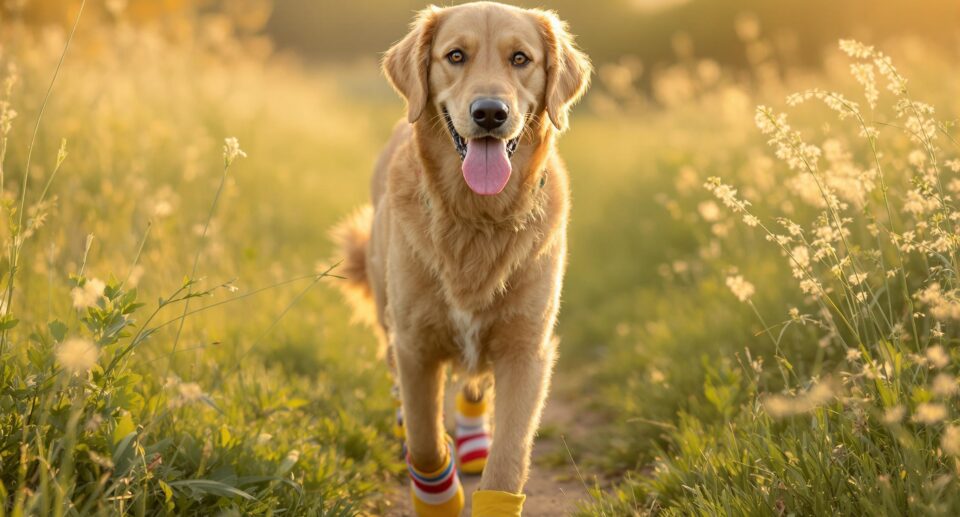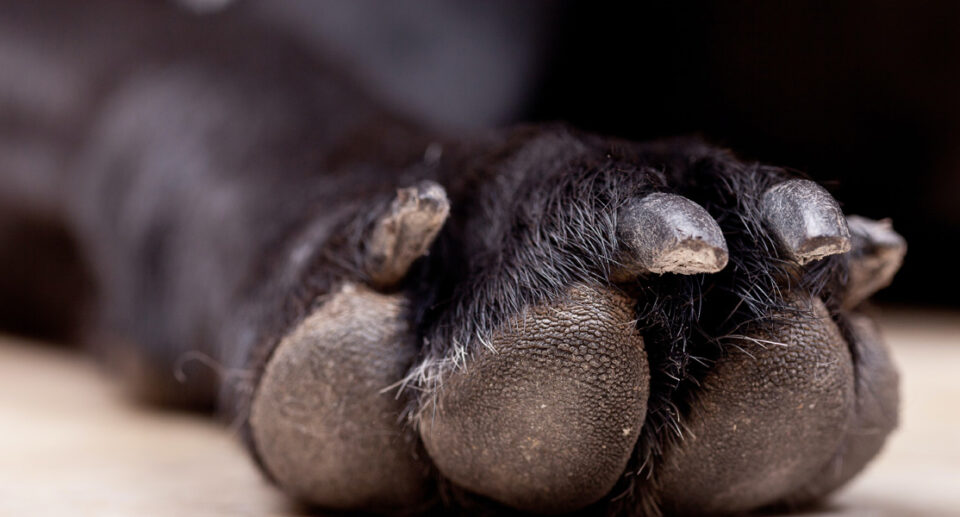Protect Your Dog’s Paws On Summer Walks

When it’s so hot you could fry an egg on the sidewalk, your dog’s paws can’t stand the heat. Though those paw pads may seem rough and thick, they’re vulnerable to blisters, cracks, and serious burns when exposed to hot surfaces.
How Hot Is Too Hot For Your Dog’s Paws?
Generally, light-colored surfaces reflect heat, while dark surfaces like asphalt and blacktop absorb it. Even in warm weather, dark-colored walkways and roads can become hot enough to injure your dog’s paws.
When the outdoor air temperature is just 77 degrees Fahrenheit, asphalt can be as hot as 125 degrees, which is hot enough to burn skin in under a minute.
Beach sand, though pale in color, also heats up quickly, reaching over 100 degrees on a 75 degree day.
As temperatures climb into the eighties and beyond, even light-colored surfaces like sidewalk can become very hot to the touch. If you’re unsure, try touching the back of your hand to the surface for seven seconds. If it’s so hot you have to pull away, it’s too hot for your dog to walk on.
Make Hot Patio And Backyard Surfaces Safer
If your dog has access to a driveway, patio, or other surface that gets very hot in the summer, there are a few ways you can make it safe for them.
A covering such as a light colored tarp or outdoor area rug can make the surface more comfortable. You can also try painting the surface with a light color. In a pinch, you can hose down a hot surface, though it’ll only stay cool for a few minutes.
When To Walk Your Dog In The Summer
Surfaces absorb heat from the sun all day long and slowly lose heat when the air cools down in the evening. Depending on where you live and the time of year, the temperature may peak at about 3 PM. It may be hours before the roads cool off.
Aim to walk your dog in the early morning and in the evenings. If you must walk your dog in the middle of the day, stick to grassy areas, stay in the shade, and keep off asphalt and blacktop.
You can also use dog booties to protect your dog’s paws. Their winter booties can work, or you can try lightweight rubber or silicone shoes designed for summer use.
Paw Damage From Hot Surfaces
First-degree paw burns may cause redness and slight discomfort. Since they usually only affect a superficial layer of skin, they can often be treated at home with Paw Rescue.
With second and third degree paw burns, you’ll notice peeling skin, blisters, and/or bleeding. If you suspect your dog has a serious burn, see a veterinarian as soon as possible. Damaged skin is susceptible to permanent damage and infection if left untreated.





